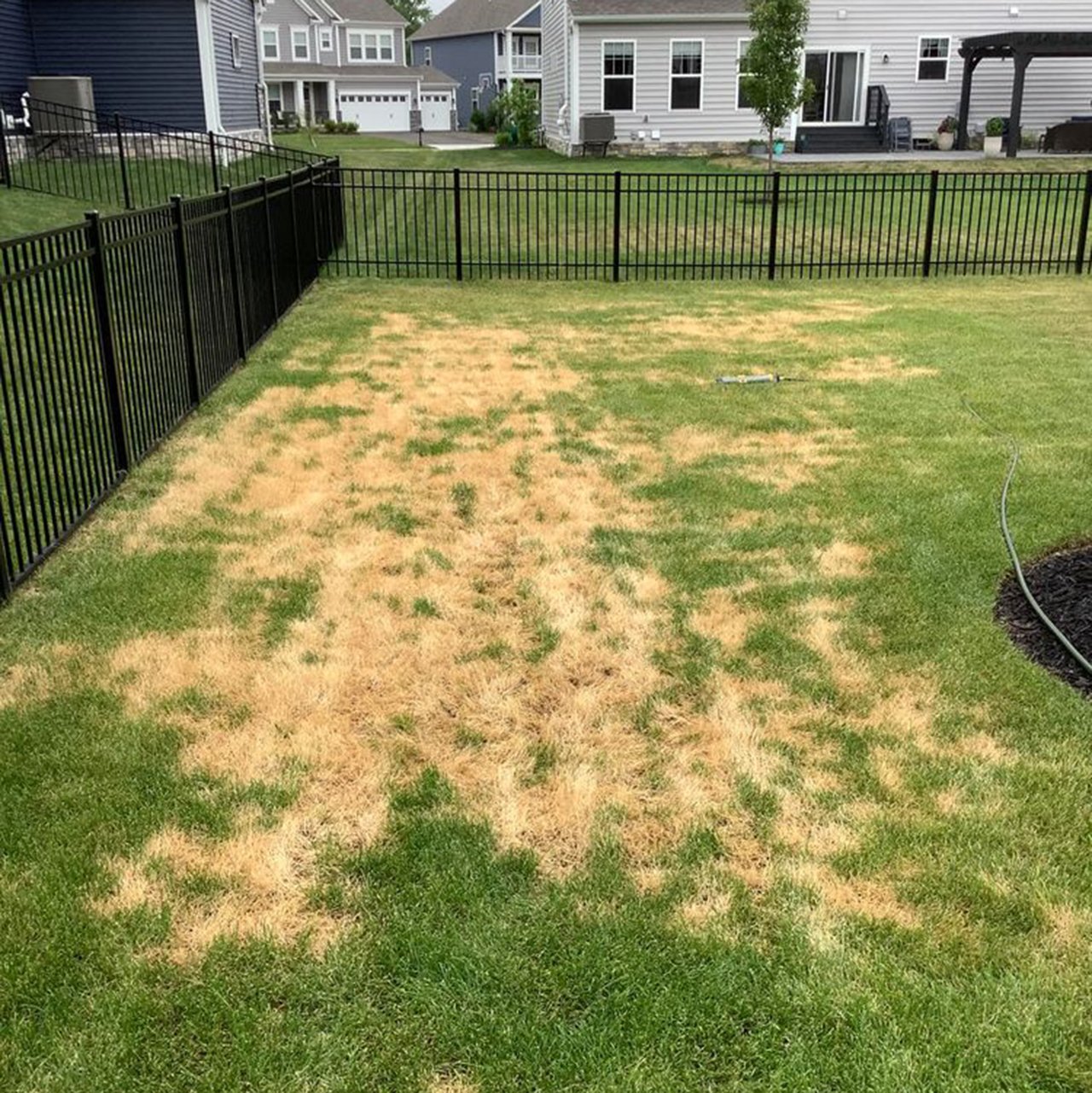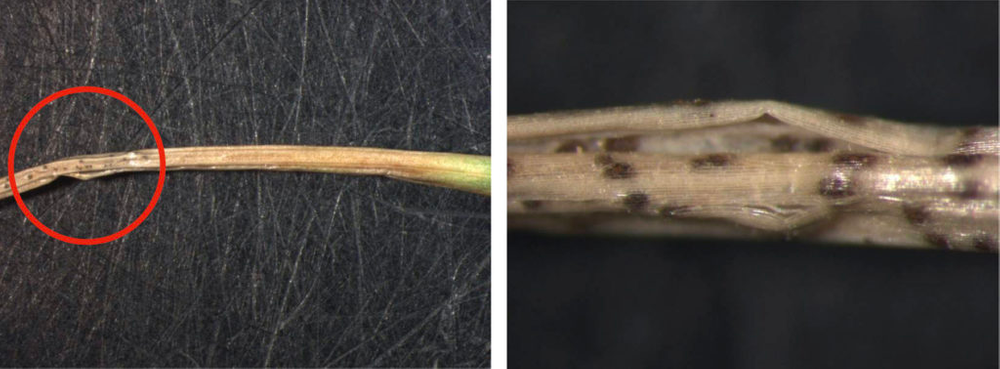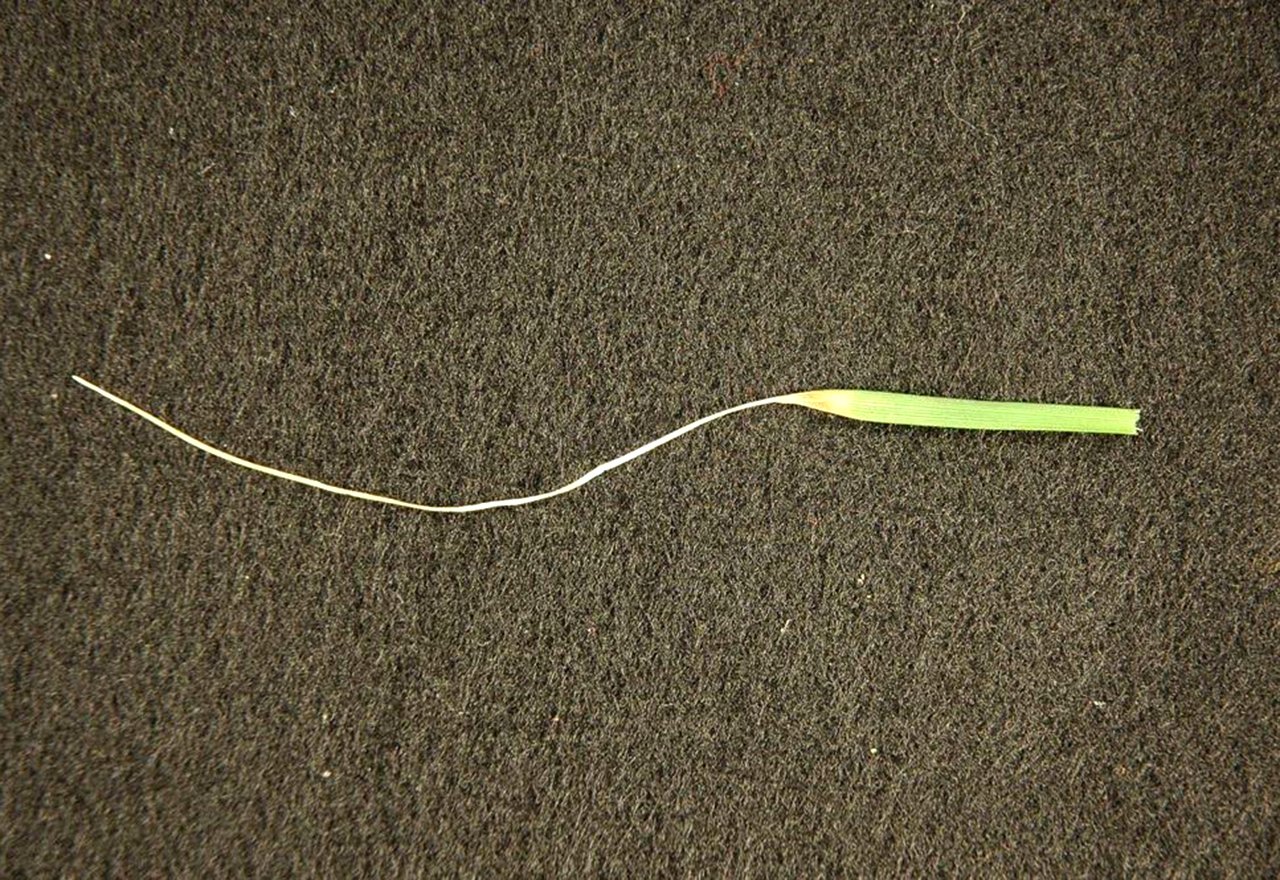A Fungus that Appears Quickly and Causes Large Bleached Patches

Ascochyta Leaf Blight is a stress-induced fungal disease found in lawns during the late Spring and Early Summer. Many grasses are susceptible, but Kentucky Bluegrass, Tall Fescue and Perennial Ryegrass are the among the most common victims. Ascochyta Leaf Blight causes bleached, dead, or straw-like irregular patches in the grass that come on very quickly, sometimes even overnight. From a distance, the straw-colored areas can resemble drought stress. While this disease looks very serious when outbreaks are widespread, it is actually quite harmless. Ascochyta Leaf Blight does not cause any permanent damage to the lawn.
Confirm your case by inspecting a few infected blades carefully. You will often identify grass pieces that look dead in the middle but still green on the top and near the root. Some will be two thirds bleached with a green third of the blade at the roots. You may also see very small, dark brown, flask-shaped fruiting bodies on your grass blades, often easiest to see with a magnifying glass. Roots are rarely affected and so the entire plant will not usually die off.

First, the weather may just be the culprit! This fungal disease typically plagues lawns when the weather alternates between hot, dry periods and cool, rainy conditions. The disease most often affects turf that is stressed. This disease will spread very fast by foot traffic, rain, and improper lawn mowing practices. Commonly, lawn mowers pick up the fungus and spread the disease throughout the lawn, creating a stripe-like pattern in the lawn. Cultural practices are the only way to help get rid of this disease.
Watering properly is key to controlling Ascochyta Leaf Blight. Lawns that are poorly watered are often more affected than those that are not. We always recommend deep, infrequent waterings. Shoot for one inch of water, once a week. Do not water so much that you have standing water and soggy soil hours later. Grass that is watered deeply will have deeper, stronger roots. Deep roots mean healthier grass overall. Also important to note, lawns that are very frequently watered and then suddenly not watered are more susceptible to the disease, which is like a quick weather change from cool and wet to hot and dry. So if you do need to change your watering habit, do so over a few weeks.
Smart mowing also helps eradicate Ascochyta Leaf Blight. Avoid mowing in the morning when the lawn is wet from the dew or last night’s scheduled watering. If the grass is wet, disease can easily enter the blades along with the water that enters the wound and allow this fungus to spread. Mow the lawn in the afternoon when the surface moisture has evaporated. Also, grass that is cut too short is more susceptible to infection. When grass is trimmed by a mower, it needs a day to repair the cut. We like to see freshly cut three and a half inch blades of grass, which helps to discourage weeds and browning. Read more about our best mowing tips.
Do not apply fertilizer or synthetic pesticides to the blight-affected areas. This will stress the grass further and kill off beneficial soil bacteria. Instead, we can do an Organic Soil Builder application, which will increase the beneficial bacteria in the soil.
Admittedly, the disease is also likely to resolve itself and go away on its own in a few weeks. Remember, it rarely affects the roots, and therefore, does not kill the entire plant. Once the weather conditions improve and with any proactive measures you choose to take, you will be able to mow off the damaged part of the grass blades in a matter of weeks.
We recommend doing a Lawn Aeration twice annually (Fall and Spring), which adds oxygen to the soil, reduces thatch and encourages deeper root growth. This also alleviates soil compaction, allowing roots to stretch out more and grow stronger. We also recommend you dethatch your lawn each year in the Fall to increase water penetration and reduce hiding spots for fungal spores. A product we've really come to trust is Biological Dethatcher.
